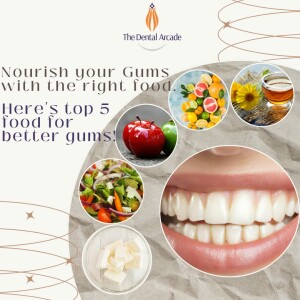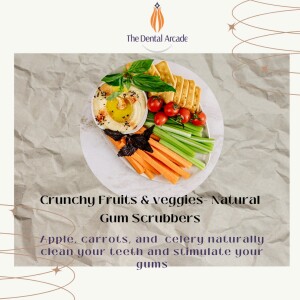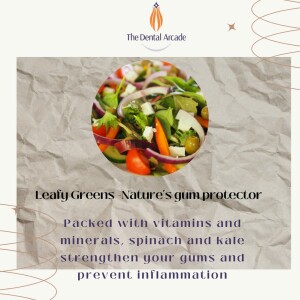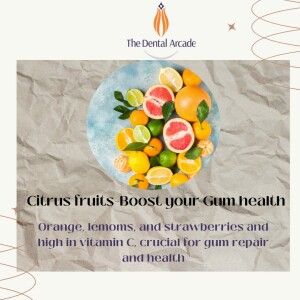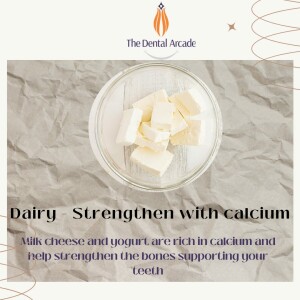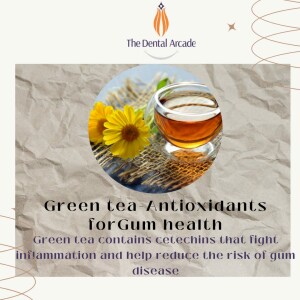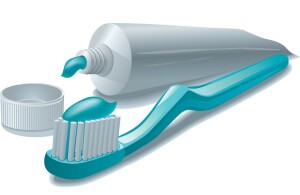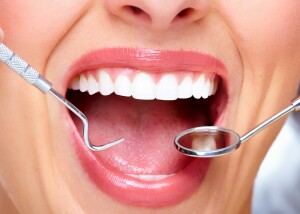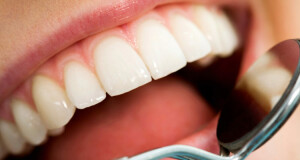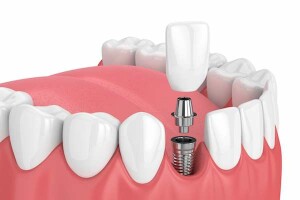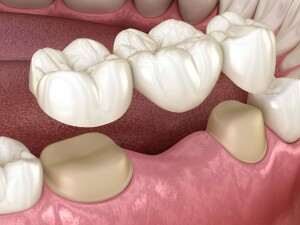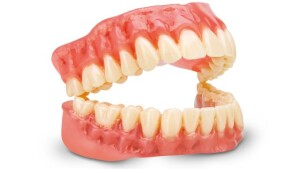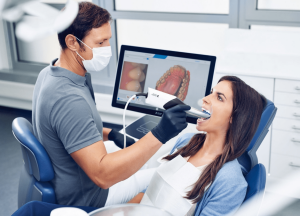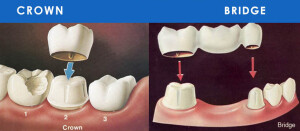Your gums need nourishment too! These delicious foods promote healthy gums by reducing inflammation and supporting tissue repair. A healthy smile starts with the right diet!
Category Archives: General
Know more about your toothpaste
Ques- Choosing a right toothpaste-a dilemma?
Ans– You have to know your teeth in order to pick toothpaste that is right for you.
After all, nobody knows your teeth better than a dentist!
Most importantly, the type of paste you use won’t make much of a difference if brushing technique is not followed.
Ques-Does the color coding on toothpaste signifies the composition?
Ans-No, they’re EYE MARKS/COLOR MARKS which are artefacts in the manufacturing process which help in identifying where product packaging is to be cut or folded.
Ques- What are the best natural alternatives for toothpaste and brush?
Ans– Neem twig(datun), Acacia (kikar/babool) are the best traditional well known natural cleaning aid for teeth from centuries in our culture. Even clinical researches have proven the same.
Ques- Do Whitening toothpastes bleach teeth?
Ans- Whitening toothpastes alone can’t make whiter teeth. They can help in maintaining the white smile achieved after in-office bleaching or take away home-bleaching kit.
Ques- Which brand of Toothpaste is best?
Ans– All the toothpaste brands are similar. You are safe to brush with quality IDA-approved standard toothpaste to maintain your teeth.
Know about your toothpaste
Ques-Why do we need toothpaste to brush our teeth?
Ans-Toothpaste is a medium which helps to clean our teeth by foaming action and aids in getting rid of bacteria, lodged food particles, debris and stains between the teeth.
Ques- How much toothpaste should be used every day?
Ans-For proper and efficient cleaning of teeth, only a pea sized amount is sufficient.
Ques- Can we use mouthwash instead of a toothpaste?
Ans– No, not at all. Mouthwash can just freshen your breath and has an antibacterial action for a little time but can’t remove the food particles and debris.
Ques-Can we use medicated toothpastes for long term?
Ans-No, medicated toothpastes should be used only after consulting your dentist for specific problem. These should be used till the time they are prescribed for. Otherwise, they can have adverse effects too.
Myth Vs Facts about Dental care
Myth #4: Diet coke is better option than the regular coke:
Fact :
You probably didn’t know that both of them are harmful to your teeth whether it is s diet soda or regular soda. Whenever we consume carbohydrates in any form, the bacteria stimulate the release of acidic content in our oral cavity, which further progresses to develop the cavities. So, if you’re thinking that diet soda will not cause cavities or other problems, and then you’ve been misleaded by anyone.
Myth #5: Visit the dentist only when there is a teeth problem:
Fact : Consulting with your dentist even if you’re feeling deep pain in your tooth once in a while, then it is absolutely wrong . Though, the pain is not constant, but this could be an early alarm for you that some abnormality is developing in your tooth.
Regular checkups every three months, to your dentist for the dental examination, if your dental problem is detected in the acute phase, it’ll be more easily treated.
Here are some Myths vs. Facts of the Dental Care
Myth #1: Sugar is only responsible for causing the cavities :
Fact : Do you know how cavities occur in your mouth? Well, when you consume the carbohydrates including sugar, vegetables, fruits and bread, the bacteria of mouth start producing the acids in the mouth, which leads to the cavities. If you’re consuming mostly, carbohydrates in your diet, then you’re highly susceptible to develop the cavities. Include proteins in your diet too for reducing the chances of tooth decay and try to stay away from the acidic products.
Myth #2: Only children get the cavities :
Fact : Nope, getting effected from the cavities is not limited to the children; yet, you can also get the tooth decay if you’re not maintaining the oral hygiene.
Certain medications cause dry mouth as the side effect. Consequently, the dry mouth has the lowest amount of saliva due to which the bacteria and acids are not neutralized and causes the tooth decay.
Myth # 3: Don’t opt for the scaling option; they’re not good for your teeth:
Fact : Scaling can help you to wash out the tartar and keeps our oral hygiene maintained. It also prevents the problem of bad breath and bleeding gums. In this way, scaling is advantageous for teeth and gums. You should visit the professional dentists for proficient cleaning of your teeth.
To Be Continued………
Dental Implants vs Dentures Vs Bridges
| Basis | Dental Implants | Dentures | Dental Bridges |
| Performance | Look and like natural teeth | Function similar to natural teeth | Look and like natural teeth |
| Comfort | Secure confident smile | Poorly fitting denture can irritate gum tissue | Sensitivity in supporting teeth |
| Durability | Create normal bite force | Reduce bite force | Vulnerable to bite force |
| Bone loss | Maintain jaw bone | Causes loss of jaw bone | Doesn’t prevent bone loss |
| Impact on natural teeth | Doesn’t impact on natural teeth | Partial denture can wear and increase cavities | Require modification of natural teeth |
| Longevity | Provide long term stability | Less than a year Doesn’t stable more than 8 years | Can last 10-20 years |
| Appearance | Eat your favourite food | Limited food choice | Eat only limited food |
| Cost | More expensive | Less expensive | More expensive |
| Time | Take one month or one year depend on the mouth condition | Less than one month | Less than one month |
| Hygiene | Brush, floss and see dentist like natural teeth | Must be removed to clean and should not be worn while sleeping | Cleaning under the bridges |
Dental Implants vs Dentures Vs Bridges….to be continued
A Dental implant is a titanium post (like a tooth root) that is surgically positioned into the jawbone beneath the gum line that allows your dentist to mount replacement teeth.
A Dental bridge is a false tooth that is held in place by the adjacent teeth on either side of the gap. Although artificial tooth can be made from a variety of materials such as gold, typically they’re made from porcelain to aesthetically blend in with your natural teeth.
Dentures are prosthetic devices constructed to replace missing teeth, and are supported by the surrounding soft and hard tissues of the oral cavity. Dentures are replacements for missing teeth that can be taken out and put back into your mouth.There are two main types of dentures: full and partial.
Benefits of Digital Impressions
Digital impressions represent cutting-edge technology that allows dentists to create a virtual, computer-generated replica of the hard and soft tissues in the mouth using lasers and other optical scanning devices. The digital technology captures clear and highly accurate impression data in mere minutes, without the need for traditional impression materials that some patients find inconvenient and messy. The impression information then is transferred to a computer and used to create restorations, often without the need for stone models.
Benefits of Digital Impressions
- Improved image/impression quality for better-fitting restorations
- Less chair time
- No need for distasteful impression materials that cause some patients to gag
- More comfortable, less anxious experience for patients and the dental team
- Reduced possibility of impression-taking errors and elimination of material inaccuracies for fewer restoration mistakes.
- The scan of the teeth being restored, as well as the opposing teeth and bite, can be completed in just three to five minutes.
- The digital impression can be stored electronically indefinitely, which saves space, contributes to efficient recordkeeping, and supports a paper-free environment.
- Green dentistry and eco-friendly aspects include eliminating the need for disposable plastic trays and impression materials, which otherwise would be polluting landfill space; digital data is eliminated with the “delete” button.
- With milled models, you have a solid model. Dies are precision-fit in the model with no movement, and all dies are captured in one model. This gives greater accuracy when restoring multiple units, such as veneer cases. There is no contamination from the patient and no die spacer is required.
Digital scanners offer many benefits that aren’t possible with traditional impression techniques, from time savings to patient education and accuracy to the ease of storing electronic data. Combine the benefits with the fact that the learning curve is small, and it’s clear that implementing a digital scanner in the dental practice is a “no brainer,”
why chewing gum is bad ?
Adults and youngsters alike enjoy chewing gum, but while chewing gum can have its advantages, like freshening breath, it also can have its disadvantages. Being conscious of the detrimental effects of gum can help consumers make healthful decisions when next purchasing and planning on chewing gum.
1. Plaque Formation
Chewing gum or eating any food can cause plaque to make . After consuming food or chewing gum, plaque can formulate on the teeth. The bacteria found in plaque can directly cause cavity . If plaque isn’t faraway from teeth quickly enough through brushing and flossing, bacteria can calcify, turn in to tartar and eventually cause gingivitis if left untreated.
2. Cavity
Chewing sugared gum can cause cavity and gum disease. The chewing gum literally coats the teeth with sugar and may be especially destructive if you don’t brush your teeth immediately after chewing. Switching to a sugarless brand can alleviate the matter .
3. Unhealthy components of Chewing Gum
Other than sugar, chewing gum has many ingredients therein aren’t necessarily good for you within the future . like aspartame and other sweeteners that are known carcinogens (cancer inducing factors) .
4. Stomach issues
Most of the chewing gum contains powerful digestive juice . According gastroenterologist, chewing on an empty stomach can trigger or aggravate gastritis or other stomach troubles. it’s been observed that the content of chewing gums which are usually rubber base, sweeteners, combined with fragrances and softeners are obviously not good for health.
5. Tooth and Jaw Issues
Frequent chewing over time also can end in the wearing down of enamel . In individuals who are vulnerable to cavity , a skinny enamel can cause the caries to spread even faster, and a sugar – containing chewing gum will only accelerate the decay rate even more.
Crowns and bridges
Care of crowns and bridges
While crowns and bridges can last a lifetime, they do sometimes come loose or fall out. The most important step you can take to ensure the longevity of your crown is to practice good oral hygiene. Keep your gums and teeth healthy by brushing with fluoride toothpaste twice a day and flossing daily. See your dentist regularly for checkups and professional cleanings.
To prevent damage to your new crown or bridge, avoid chewing hard foods, ice or other hard objects.
Procedure
All ceramic and porcelain fused to metal crowns can be matched to the color of your natural teeth. A bridge is mounted onto a space where teeth are missing and is attached onto adjacent teeth. These teeth, called abutments, serve as anchors for the bridge. As with crowns, you have a choice of materials for bridges. Your dentist can help you decide which is best for you, based on the location of the missing tooth (or teeth), its function, aesthetic considerations and cost.

